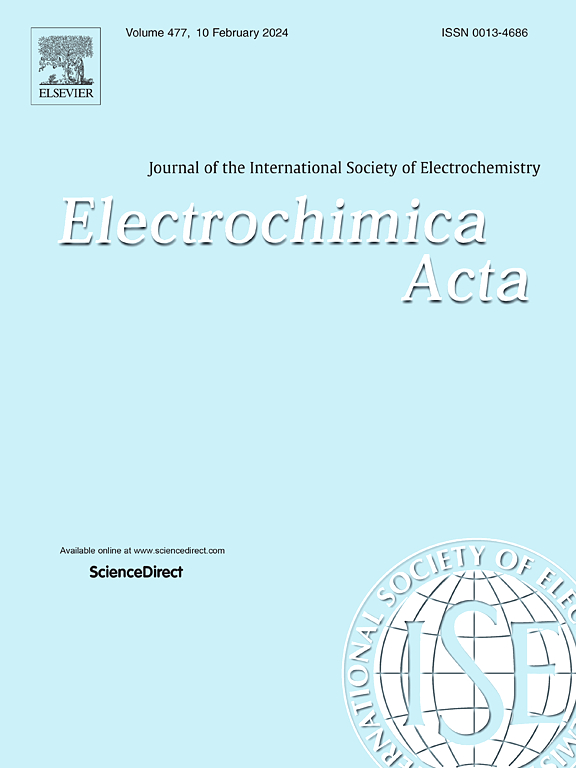探索硅酸盐基对铜在动态盐水环境中的缓蚀潜力
IF 5.6
3区 材料科学
Q1 ELECTROCHEMISTRY
引用次数: 0
摘要
在静态和动态流动条件下,研究了水玻璃钠(SS)和海藻酸钠-水玻璃钠缓蚀剂(SASS)作为盐环境中铜的可持续绿色缓蚀剂。电位动扫描和电化学阻抗谱显示,SS在静态和流动的水条件下都具有保护作用(分别高达86%和97%)。通过Mott-Schottky法还发现,随着硅酸盐浓度的增加(静态和动态测试分别达到5和10 mM SS),膜的整体电阻率增加与膜的缺陷密度下降之间存在显著的联系。此外,获得的EIS和M-S结果显示,在氧化铜膜的顶部形成了单独的硅酸盐基膜。通过流速的变化,研究了硅酸盐扩散对缓蚀机理和薄膜缺陷结构的影响。SS和SA的结合形成了增效的SASS共混物,腐蚀性能明显改善。然而,为了达到最佳的缓蚀效率,需要更高的硅酸盐浓度(5 mM SS)。随着水硬度的增加,SS的缓蚀效率降低,而在SASS混合物中掺入SS则随着硬度的增加而增加,在50 ppm Ca2+Ca2+时达到最佳缓蚀效果。提出了Ca2+Ca2+和Mg2+Mg2+作为网络形成物形成SA-SS膜结构的机理。本文章由计算机程序翻译,如有差异,请以英文原文为准。
Exploring the potential of silicate-based corrosion inhibition for copper in dynamic salt water environment
Sodium silicate (SS) and a sodium alginate–sodium silicate inhibitor blend (SASS) are investigated as sustainable green corrosion inhibitors for copper in saline environment under both static and dynamic flow conditions. Potentiodynamic scans and Electrochemical Impedance Spectroscopy revealed that SS is protective in both static and flowing water conditions (up to 86 and 97% resp.). A significant link is also found between the increasing overall film resistivity at increasing silicate concentrations (up to 5 and 10 mM SS for static and dynamic testing, respectively) and the decreasing film’s defect density via Mott-Schottky. Furthermore, the acquires EIS and M-S results revealed that a separate silicate-based film is formed on top of a copper oxide film. By flow speed variation, the importance of silicate-diffusion on the inhibition mechanism and film’s defect structure is also studied. The combination of SS and SA results in a synergistic SASS blend, showing a clear improvement of the corrosion properties. However, higher silicate concentrations (5 mM SS) are required in this blend to reach optimal inhibition efficiencies. While inhibition by SS decreases the efficiency with increasing water hardness, incorporation of SS into a SASS blend alternatively increases the effectiveness with increasing hardness, reaching optimal inhibition at 50 ppm . A mechanism is proposed, in which and act as network formers for the formed SA-SS film structure.
求助全文
通过发布文献求助,成功后即可免费获取论文全文。
去求助
来源期刊

Electrochimica Acta
工程技术-电化学
CiteScore
11.30
自引率
6.10%
发文量
1634
审稿时长
41 days
期刊介绍:
Electrochimica Acta is an international journal. It is intended for the publication of both original work and reviews in the field of electrochemistry. Electrochemistry should be interpreted to mean any of the research fields covered by the Divisions of the International Society of Electrochemistry listed below, as well as emerging scientific domains covered by ISE New Topics Committee.
 求助内容:
求助内容: 应助结果提醒方式:
应助结果提醒方式:


